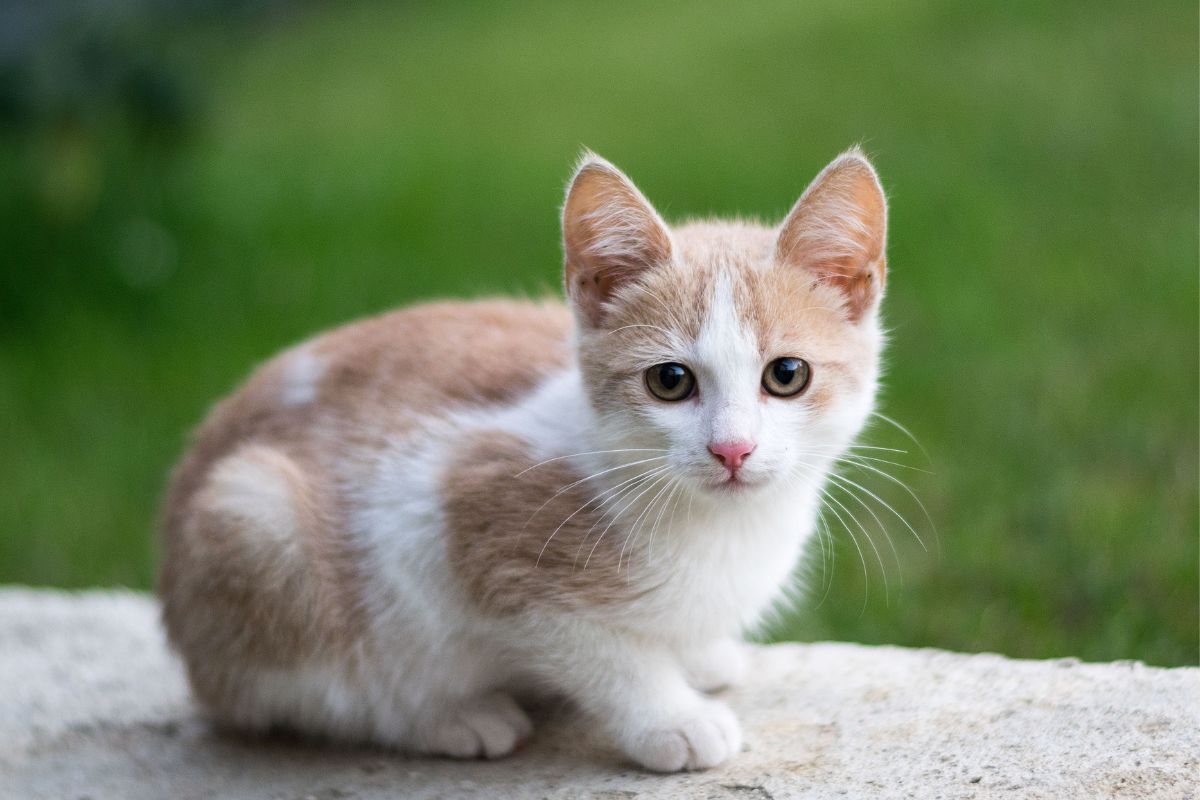Natural Remedies for Cat Hairballs

Hairballs (trichobezoars) form when cats ingest loose fur while grooming. Cats’ tongues have tiny backwards-facing barbs that catch loose hair, which then gets swallowed and sent to the stomach. Most hair passes harmlessly through the gut, but undigested keratin can clump into wads (hairballs) that the cat eventually vomits up or passes in stool. An occasional hairball (roughly once a month) is normal, but frequent hairballs can signal a problem.
Causes of Hairball Formation
-
Normal grooming: Cats are meticulous groomers. As they lick themselves, their barbed tongues catch shed fur, which is then swallowed. The indigestible keratin in hair naturally accumulates in the stomach over time.
-
Excessive shedding: Seasonal shedding or breed characteristics (long-haired breeds like Persians or Maine Coons) increase the amount of loose hair available. Older or indoor cats often groom more carefully and may produce more hairballs.
-
Overgrooming: Stress, anxiety, allergies or skin irritation can cause a cat to over-groom, ingesting extra fur. Flea infestations or allergies may trigger compulsive licking.
-
Underlying illness: Gastrointestinal issues (like inflammatory bowel disease, parasites, or motility disorders), or conditions that slow gut transit, can contribute to hairball formation. Cats with skin diseases that increase shedding (e.g. mites, dermatitis) will also ingest more fur.
Understanding these causes helps target prevention. For example, reducing stress and treating skin issues can curb overgrooming, while addressing gastrointestinal problems improves overall digestion.
Signs of Hairball Trouble
Occasional hairball vomiting (a slimy wad of fur) is usually harmless. However, watch for warning signs that indicate hairballs are causing issues:
-
Frequent hairballs: More than one hairball per month suggests an underlying problem. Cats should not vomit up hairballs too often.
-
Excessive retching or gagging: Cats often make a characteristic “cough-gag-retch” sound when expelling a hairball. If a cat repeatedly retches without bringing up a hairball, it may be stuck in the gut.
-
Persistent vomiting: Vomiting several times in a day (with or without hair) or vomiting for more than a day requires veterinary attention.
-
Appetite loss and lethargy: A sudden drop in appetite or energy level is a red flag. These can signal that a hairball is obstructing the digestive tract or another illness is present.
-
Constipation or diarrhea: Difficulty passing stool (or frequent diarrhea) can accompany hairball issues. A swollen or painful abdomen is especially concerning.
-
Excessive grass-eating: Chewing grass is sometimes a cat’s way to induce vomiting when they feel hairball discomfort.
If your cat exhibits persistent grooming, frequent retching, or any of the above symptoms, consult your veterinarian promptly. A lodged hairball can cause an intestinal blockage, which is life-threatening without treatment.
Dietary Changes and Supplements
Adjusting your cat’s diet can help prevent and manage hairballs by keeping fur moving through the gut and improving coat health:
-
High-fiber foods: A diet higher in fiber helps sweep ingested hair through the digestive tract. Special hairball-control cat foods are formulated with extra insoluble fiber (often ~6–12% fiber) to aid hair transit. Examples include prescription gastrointestinal diets or over-the-counter “hairball” formulas (e.g. Purina ONE Hairball or Hill’s Science Diet Hairball Control).
-
Pumpkin or pureed squash: Adding 1 teaspoon of canned pure pumpkin (not pie filling) to your cat’s food provides soluble and insoluble fiber. The fiber in pumpkin can help bulk up stools and move hair along. Pumpkin is safe in small amounts and also hydrates the gut.
-
Psyllium husk: Products like plain Metamucil or psyllium powder (unsweetened) offer soluble fiber. Sprinkle a bit on food to increase fiber intake; this can aid bowel movements. Introduce slowly to avoid diarrhea.
-
Omega-3 fatty acids: Fatty acids from fish oil or a balanced omega-3/omega-6 supplement support skin and coat health. A healthier coat usually means less shedding. Pure fish oil capsules (given with food) are better than cooking oils. Caution: Never give large amounts of vegetable oil, butter or mineral oil. PetsMD warns that cooking oils will be digested and not help hairballs, and mineral oil is dangerous if aspirated. Instead, a balanced supplement specifically for cats is safer. Always consult your vet before adding new supplements.
-
Hydration: Ensure fresh water is always available. Wet (canned) food can boost fluid intake. Proper hydration keeps intestinal contents softer and helps hair pass more easily.
Key takeaway: A species-appropriate diet rich in fiber and moisture is the cornerstone of hairball prevention. Introduce any dietary change gradually and under veterinary guidance.
Grooming and Environmental Enrichment
Grooming your cat often is one of the most effective natural defenses against hairballs. Brushing removes loose fur before your cat can lick and swallow it.
Regularly brushing your cat to remove loose fur can dramatically reduce hair ingestion. Long-haired cats may need daily grooming, while short-haired cats benefit from weekly brushing.
-
Brushing tools: Use a brush or comb designed for cats (slicker brush, rubber curry, or grooming glove). Be gentle and make it a positive experience.
-
Frequency: Long-haired cats often require daily brushing during shedding seasons; short-haired cats at least once a week. Start slowly if your cat is sensitive.
-
Professional grooming: For very matted or dense coats, consider a professional groomer or a trim, which can reduce fur intake.
-
Additional tips: Wipe your cat with a damp cloth or pet wipe after brushing to catch loose hairs. Clipping your cat’s claws can also help (claws catch less fur on fabrics).
-
Environment: Give your cat enrichment to reduce stress-related grooming. Provide vertical perches, interactive play, and scratching posts. Reducing anxiety and boredom can cut down on obsessive licking.
-
Humidity and bathing: Dry skin leads to more shedding. Using a humidifier (in dry climates or winter) can help prevent excessive shedding. Occasional bathing (with cat-safe shampoo) can reduce shedding, but most cats dislike baths.
Consistent grooming sessions not only keep the fur under control but also strengthen your bond with your cat. As one holistic veterinary source notes, brushing “remove[s] loose and dead hair and minimize[s] how much fur your cat ingests”.
Home Remedies and Natural Treatments
In addition to diet and grooming, some home remedies and supplements can help manage hairballs. Use these sparingly and safely, and always check with your vet before starting any new regimen.
- Pumpkin: Pure canned pumpkin is a time-tested remedy. Its soluble and insoluble fiber help bulk up the stool and lubricate the gut. A teaspoon of pumpkin mixed into food a few times a week can aid in passing hair.
-
Slippery Elm: This herb is safe for cats and acts as a gentle demulcent, coating and soothing the gut lining. Slippery elm is high in fiber and mucilage, helping fur slide through the tract. You can find it in powder form (often in digestive supplements). Typical dosage is small (e.g. 100–200 mg per 10 lbs body weight once or twice daily) mixed with food or water.
-
Catnip or Cat Grass: Catnip contains mild fiber and also encourages playful activity. Chewing cat grass or catnip can sometimes help a cat vomit a hairball or increase gut motility. Growing wheatgrass or oat grass at home gives cats safe plants to chew.
-
Fiber supplements: A bit of psyllium husk powder (Metamucil) can be used occasionally. Start with 1/8–1/4 teaspoon mixed in food once a day or less, to avoid gas or diarrhea. Oat or rice bran (a teaspoon) is another fibrous addition.
-
Omega-3 / Coconut Oil: Some owners add a small amount (1/4–1/2 teaspoon) of fish oil or virgin coconut oil to food once or twice a week. These healthy oils can lubricate the digestive tract and improve coat quality. (Note: this is different from “cooking oil.” Use supplement-grade oils). Introduce very gradually because too much fat can cause loose stools. If a cat has pancreatitis or other fat-sensitive issues, avoid oils.
-
Hairball pastes and lubricants: Many over-the-counter gels (Laxatone, petroleum jelly mixes) are available. They contain mineral oil or petrolatum to coat the gut. While these work as physical lubricants, use them only occasionally and under vet advice, since veterinarians caution against frequent use of mineral oil due to inhalation risk. Natural remedies are preferred when possible.
-
Probiotics / Digestive enzymes: A healthy gut microbiome aids digestion. Probiotic supplements or a spoon of plain yogurt (if your cat tolerates dairy) can support gut health. Some hairball treats incorporate digestive enzymes or probiotics to improve motility.
- Vet note: PetMD specifically warns never to give your cat butter, lard, or random cooking oils for hairballs. Those substances provide calories but do little for fur, and mineral oil especially can be dangerous if aspirated. Always consult a veterinarian before using oils or herbal supplements.
All these remedies should be used judiciously. The goal is to add gentle fiber and lubrication to the diet. If your cat is on a balanced, hairball-management food, extra supplementation may not be needed. Observe your cat’s response and adjust accordingly.
When to Consult the Veterinarian
Even with all precautions, you should seek veterinary care if:
-
Hairballs become very frequent (more often than every few weeks).
-
Your cat cannot expel a hairball and is repeatedly retching with no results.
-
Acute symptoms appear: loss of appetite, lethargy, dehydration, abdominal swelling, or straining to vomit or defecate.
-
Hairball episodes come with ongoing gastrointestinal signs like diarrhea, constipation, or weight loss.
In these cases, a veterinarian can examine your cat. They may perform a physical exam, X-rays, ultrasound or blood tests to rule out obstructions or other diseases. Treatment for a true intestinal blockage usually requires surgery.
Your vet can also help tailor a prevention plan. They might recommend a professional grooming plan, specific fiber supplements, or even address behavioral causes (like stress or allergies) of overgrooming.
Conclusion
Hairballs are a normal occasional nuisance of cat ownership, but they need not be a frequent or serious problem. By understanding the causes (excess fur ingestion or slowed gut transit) and recognizing warning signs, you can take action early. A multifaceted approach works best: regular grooming to remove loose hair, a balanced diet rich in fiber and moisture, and strategic natural supplements (like pumpkin or slippery elm) can all help manage hairballs.
Keep an eye on your cat’s behavior and health. If hairballs seem to increase or your cat shows any distress, consult your veterinarian. Together with your vet, you can find a safe, effective strategy so that hairballs remain an occasional wobble, not a serious threat, in your cat’s life.






